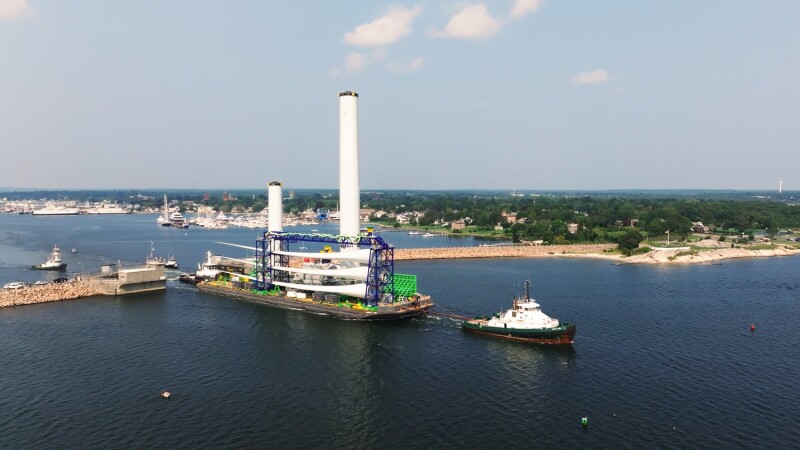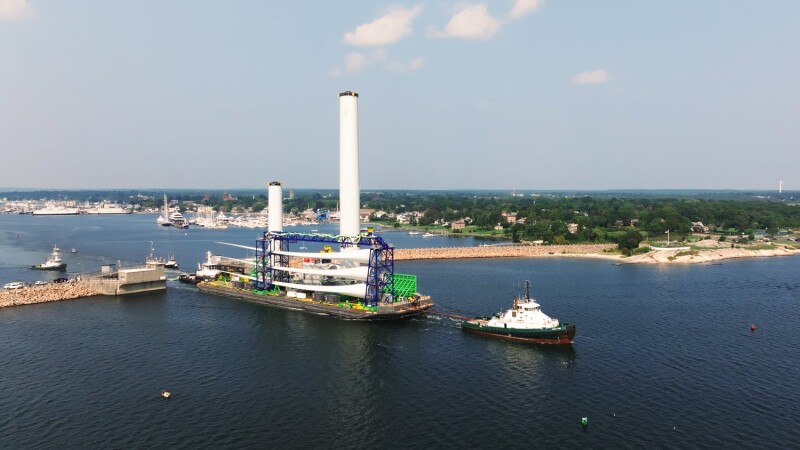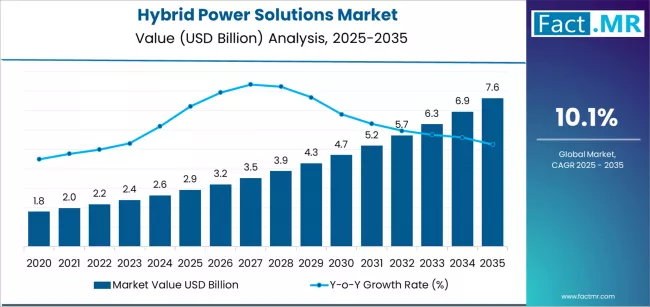Trump administration cancels plans to develop new offshore wind projects – The Pilot News

Report on U.S. Offshore Wind Policy Reversal and its Implications for Sustainable Development Goals
Executive Summary
The Trump administration has initiated a significant policy reversal by canceling the designation of large federal water tracts for offshore wind energy development. This action, rescinding over 3.5 million acres previously identified as Wind Energy Areas, directly challenges the nation’s progress towards key United Nations Sustainable Development Goals (SDGs), particularly SDG 7 (Affordable and Clean Energy), SDG 13 (Climate Action), and SDG 9 (Industry, Innovation, and Infrastructure). The move signals a strategic shift away from renewable energy in favor of fossil fuels, creating considerable conflict with state-level climate objectives and international environmental commitments.
Impact on SDG 7: Affordable and Clean Energy
The administration’s decision fundamentally undermines efforts to increase the share of renewable energy in the national energy mix, a core target of SDG 7.
Cancellation of Designated Wind Energy Areas
The Bureau of Ocean Energy Management has officially rescinded all designated wind energy areas in federal waters. This policy shift halts planned offshore wind lease sales that were anticipated in multiple regions, thereby impeding the expansion of clean energy infrastructure.
- Affected Areas: Lease sales were expected off the coasts of Texas, Louisiana, Maine, New York, California, Oregon, and in the central Atlantic.
- Previous Plan: This action reverses a five-year schedule announced by the Biden administration to lease federal tracts for wind energy production.
Administration’s Rationale
The policy change is justified by the administration as a measure to end “speculative wind development” and to cease preferential treatment for what it terms “unreliable, foreign-controlled energy sources.” This is consistent with a series of executive orders aimed at increasing domestic oil, gas, and coal production, placing fossil fuel development at a higher priority than the transition to renewables as promoted by SDG 7.
Broader Implications for Sustainable Development
The policy has far-reaching consequences that extend beyond energy, affecting climate action, economic growth, and environmental stewardship.
Setback for SDG 13: Climate Action
By actively suppressing the growth of the offshore wind industry, the administration is limiting a critical tool for reducing greenhouse gas emissions. This move runs counter to the global imperative of SDG 13 to take urgent action to combat climate change and its impacts. The increased reliance on fossil fuels that this policy encourages will exacerbate climate challenges.
Consequences for SDG 8 & SDG 9: Economic Growth and Sustainable Infrastructure
The cancellation of large-scale wind projects represents a significant missed opportunity for economic development and innovation, impacting SDG 8 (Decent Work and Economic Growth) and SDG 9 (Industry, Innovation, and Infrastructure).
- Job Creation: The burgeoning offshore wind industry, supported by European developers and domestic partners, is a source of new, skilled jobs which are now at risk.
- Infrastructure Development: The policy halts the development of advanced, sustainable energy infrastructure. While technologies like battery storage are increasingly paired with renewables to ensure grid stability, this policy curtails the primary projects they would support.
Environmental Considerations: SDG 14 & SDG 15
While the Interior Department has cited concerns over bird mortality (related to SDG 15, Life on Land), the policy’s broader effect is to hinder a key strategy for mitigating climate change’s severe impacts on marine ecosystems (SDG 14, Life Below Water), such as ocean acidification.
Stakeholder Reactions and Governance Conflicts
The decision has elicited strong and polarized reactions, highlighting a deep divide in the approach to sustainable development and creating legal challenges that reflect a breakdown in cooperative governance (SDG 17, Partnerships for the Goals).
Divergent Views
- Support: Opponent groups, such as Protect Our Coast New Jersey, have applauded the decision, citing the scale and expense of offshore projects compared to onshore power sources.
- Opposition: Environmental organizations like the Sierra Club condemn the move as an obstruction of affordable, clean energy that favors the fossil fuel industry over public health and a sustainable future.
Legal and Political Challenges
The conflict between federal policy and state-level sustainability goals has escalated to the courts. A coalition of 17 states and the District of Columbia is suing to challenge the executive order halting wind energy leasing and permitting. This legal battle underscores the tension between national policy direction and the multi-level partnerships required to achieve the SDGs.
Analysis of Sustainable Development Goals in the Article
1. Which SDGs are addressed or connected to the issues highlighted in the article?
- SDG 7: Affordable and Clean Energy
- SDG 13: Climate Action
- SDG 15: Life on Land
- SDG 17: Partnerships for the Goals
2. What specific targets under those SDGs can be identified based on the article’s content?
-
SDG 7: Affordable and Clean Energy
- Target 7.2: By 2030, increase substantially the share of renewable energy in the global energy mix. The article’s central theme is the cancellation of offshore wind development, which directly impacts the growth of renewable energy’s share in the U.S. energy portfolio. The article states the administration is “canceling plans to use large areas of federal waters for new offshore wind development” and ending “preferential treatment toward wind and solar facilities,” which is a direct setback to this target.
-
SDG 13: Climate Action
- Target 13.2: Integrate climate change measures into national policies, strategies and planning. The article highlights a significant shift in national policy away from climate-friendly energy sources. The text mentions “executive orders” that “took aim at increasing oil, gas and coal production,” which is contrary to integrating climate change mitigation into national planning. This reversal of the previous administration’s “five-year schedule to lease federal offshore tracts for wind energy production” demonstrates a lack of integration of climate measures.
-
SDG 15: Life on Land
- Target 15.5: Take urgent and significant action to reduce the degradation of natural habitats, halt the loss of biodiversity and, by 2020, protect and prevent the extinction of threatened species. The article mentions that the Interior Department “will review bird deaths associated with wind turbines.” This directly relates to the impact of energy infrastructure on biodiversity and the need to manage and mitigate harm to wildlife habitats.
-
SDG 17: Partnerships for the Goals
- Target 17.14: Enhance policy coherence for sustainable development. The article exemplifies a lack of policy coherence. The conflict between the current administration’s executive orders to halt wind projects and the previous administration’s five-year plan for wind energy shows a stark inconsistency in national strategy. Furthermore, the legal action by “Attorneys general from 17 states and the District of Columbia” against the federal government’s policy highlights a breakdown in coherent governance for sustainable development.
- Target 17.17: Encourage and promote effective public, public-private and civil society partnerships. The article shows various partnerships at play. It mentions that “European companies are developing offshore wind farms along America’s East Coast,” indicating public-private and international partnerships. It also highlights the role of civil society organizations, such as the “Sierra Club” advocating for clean energy and “Protect Our Coast New Jersey” opposing the projects.
3. Are there any indicators mentioned or implied in the article that can be used to measure progress towards the identified targets?
-
For Target 7.2 (Increase share of renewable energy)
- Indicator: The area designated for renewable energy development. The article specifies that “More than 3.5 million acres had been designated wind energy areas,” and the rescinding of this designation is a direct negative indicator of progress.
- Indicator: The number and scale of renewable energy projects. The article mentions planned “offshore wind lease sales… off the coasts of Texas, Louisiana, Maine, New York, California and Oregon” and the existence of the “12-turbine wind farm called South Fork.” Tracking the cancellation or completion of such projects serves as a clear indicator.
-
For Target 13.2 (Integrate climate measures into policy)
- Indicator: The existence and direction of national energy policies and executive orders. The article points to specific “executive orders” aimed at increasing fossil fuel production and halting wind energy projects. These documents serve as direct indicators of the country’s policy direction concerning climate action.
-
For Target 15.5 (Halt biodiversity loss)
- Indicator: Data on wildlife mortality from energy infrastructure. The article explicitly mentions the plan to “review bird deaths associated with wind turbines.” This data, once collected and analyzed, would serve as an indicator of the impact on biodiversity and the effectiveness of mitigation measures.
-
For Target 17.14 (Enhance policy coherence)
- Indicator: The number of legal challenges between different levels of government on sustainability issues. The article states that “Attorneys general from 17 states and the District of Columbia are suing in federal court to challenge Trump’s executive order.” This legal conflict is a strong indicator of a lack of policy coherence.
4. Table of SDGs, Targets, and Indicators
| SDGs | Targets | Indicators |
|---|---|---|
| SDG 7: Affordable and Clean Energy | 7.2: Increase substantially the share of renewable energy in the global energy mix. |
|
| SDG 13: Climate Action | 13.2: Integrate climate change measures into national policies, strategies and planning. |
|
| SDG 15: Life on Land | 15.5: Take urgent and significant action to reduce the degradation of natural habitats, halt the loss of biodiversity. |
|
| SDG 17: Partnerships for the Goals | 17.14: Enhance policy coherence for sustainable development.
17.17: Encourage and promote effective public, public-private and civil society partnerships. |
|
Source: yahoo.com

What is Your Reaction?
 Like
0
Like
0
 Dislike
0
Dislike
0
 Love
0
Love
0
 Funny
0
Funny
0
 Angry
0
Angry
0
 Sad
0
Sad
0
 Wow
0
Wow
0










































































